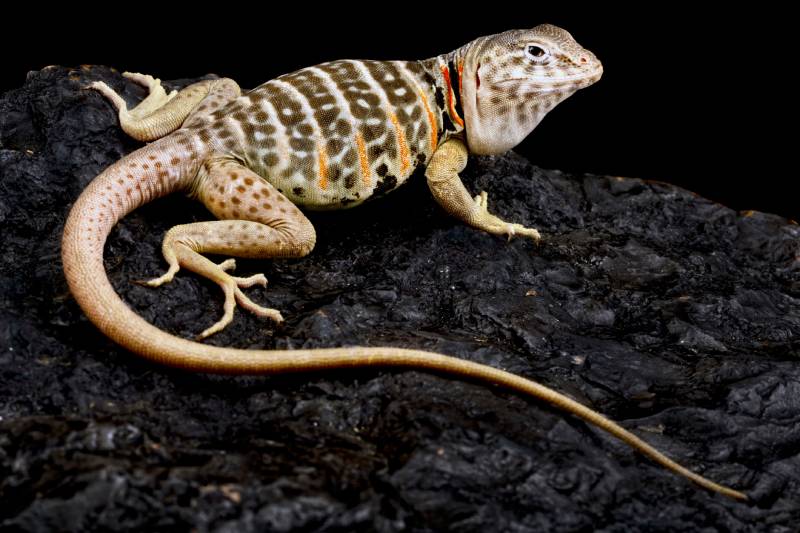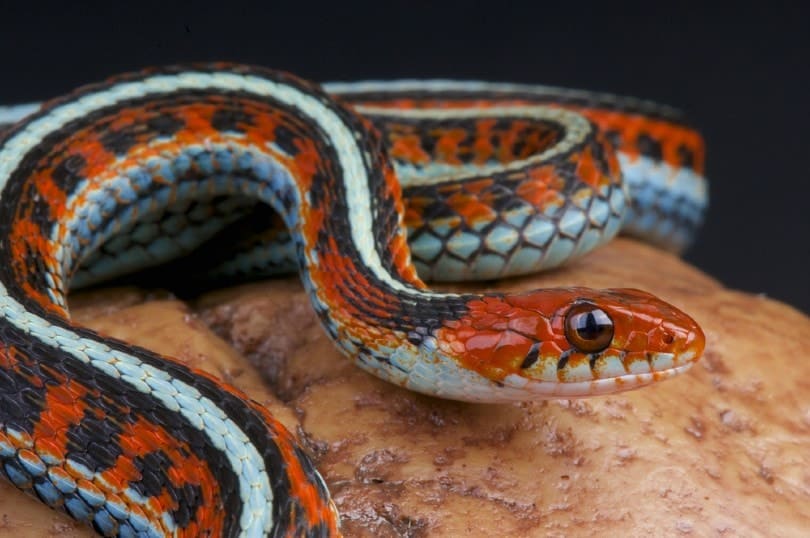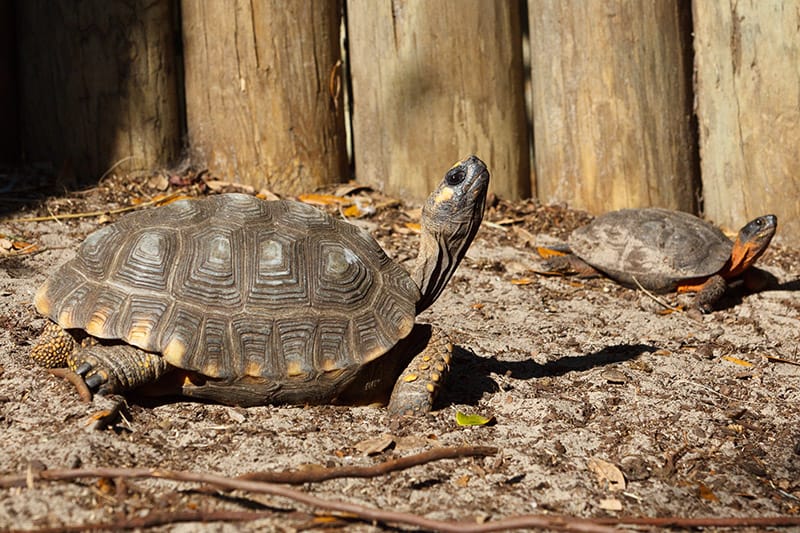Get in the know, all sorts of glossary terms used by herptologists and reptile enthusiasts alike!
This glossary of terms for herptiles and arthropods comes in real handy for both beginners and advanced hobbyists. Have you ever been stumped by the terms used in the world of lizards, tarantulas, newts or other offbeat animals, like their dewlop, a scute, or how about being oviparous? That’s where this dictionary of scientific terms related to reptiles, ambphibians, and land invertebrates, comes in very handy.
There are lots of unique words used to describe parts of snakes, frogs, turtles or other reptiles and amphibians, as well as arachnids like a scorpions or a tarantula, and even insects. These terms are not only unusual, but actually quite interesting. And the more you read, the more questions that will come up. But beware, with the list of herptile and arthropod glossary terms, you’ll find answers and then if you keep going… you’ll start thinking like an expert!
- Want to see the animals? Find all sorts of Reptiles, Amphibians and Arthropods
A – C
ambient temperature – The overall temperature of the environment.
albino – A lack of pigment in the skin. (Pinkness comes from the blood color)
amniote – This is a group of tetrapods (four-limbed animals with backbones or spinal columns) that have terrestrially adapted eggs, including amphibians, reptiles, birds, and mammals.
anterior – Pertains to the front or head end.
anterioventral – Pertains to the front of the lower surface.
anus – An opening at the base of the tale. (see cloaca)
arthropod – An invertebrate animal having an exoskeleton (external skeleton), a segmented body, and jointed appendages.
arboreal – Lives in trees or bushes.
autotomy – The voluntary shedding of the body parts of animals, usually in defense. Autotomy of the tail is common in many lizards.
carapace – A bony or hard shell that covers part or all of an animal. Turtles, crabs, and boxfish are good examples.
carnivore – Animals who hunt and eat other animals; meat eater.
casque – The head or crest of an animal
cephalothorax – The tagma of found in some arthropods, it is a segment comprising the head and the thorax fused together, and is distinct from the abdomen behind.
chelonians – Pertaining to turtles, terrapins, and tortoises.
cloaca – A chamber that opens through the anus that is used for both excretion and reproduction.
cranial – Often referring to the top of the head (cranial crest).
crepuscular – Becomes active at dusk, dawn, and twilight.
cryptic coloration – Patterning or color to camouflage or conceal.

D – H
detritivore – Animals that are detritus feeders, eating dead and decaying leaves and other decomposing plant and animal parts, as well as organic fecal matter.
dewlap – The flap of skin on the throat of some lizards; like iguanas and anoles.
dichromatism – Color differences between individuals of the same species.
dimorphism – Any of the various differences between individuals of the same species; like color and size. Often sex-related differences.
diurnal – Active during the day.
dorsal – Pertains to the back or upper surface.
dorsolateral – Pertains to the upper sides.
dorsolateral ridge/fold – A glandular ridge on the upper sides of certain frogs.
ecology – Scientific study of the interations of organisms and their environment.
ectothermic – An animal that cannot regulate its own body temperature, rather it’s regulated by the environment, so they often bask for heat, burrow, and hibernate.
endemic – Indigenous to a specific region or area.
estivation – Similar to hibernation, some herptiles will bury themselves and remain dormant when the climate is too dry and/or hot for comfort. It is also spelled aestivation.
fossorial – It burrows or digs.
genus – A grouping by kind or class. Several united species makes a genus.
gravid – A female bearing eggs or embryos.
hemipenis – The copulatory organ of a male snake or lizard.
herpetology – Scientific Study of reptiles and amphibians.
herptile, herp, herpetofauna – Reptiles and amphibians together.
herbivore – Plant eater, vegitarian.
hibernate – To pass a cold season in sleep or seclusion.
hybrid – A crossbred animal. The offspring of two different species.

I – O
Insectivore – Insect eater, subsists on insects.
invertebrate – An animal without a backbone.
intergrade – Animals that seem to blend characteristics of subspecies.
Jacobson’s organ – An organ for detecting odor located in the roof of the mouth. The tongue delivers the odor. The nostrils connect to the lung or lungs.
lateral – Pertaining to the side.
larva – the early form or first stage of an insect during its development.
melanism – Blackness, the opposite of albinism.
metamorphosis – The change from a larval state to an adult state.
middorsal – Pertaining to the middle of the back.
midventral – Pertaining to the middle of the belly..
neotenic – Reaching sexual maturity while still in larval form; some salamanders.
neurotoxin – A poison that affects the nervous system.
omnivore – Animals who eat both meat and vegetables.
oviparous – An animal who lays eggs, and then later the eggs hatch.
ovoviviparous – An animal who holds the eggs inside its body until they hatch and living young are delivered. However, the embryo is sustained by the contents of the egg and not by any connection to the animal that holds it.

P – R
pedipalps, palps, palpi – Either of the second pair of appendages near the mouth of spiders or other arachnids. They are modified for various reproductive, predatory, or sensory functions.
plastron – The lower shell of a turtle.
poikilothermal – Term used for variable temperature cold-blooded animals.
posterior – Pertaining to the rear.
posterioventral – Pertaining to the rear portion of the lower surface.
pectines – comb like sensory structures visible on the ventral surface of scorpions.
prehensile tail – Capable of grasping or wrapping with the tail.
rostral (horns) – Horns around the nose area.

S – Z
scute – A horny, chitinous, or bony external plate or scale, as on the shell of a turtle or the underside of a snake. Also called scutum.
semi-aquatic – Able to live on both land and water; some turtles and frogs.
species – One or more animals which closely resemble one another. A group of them together forms a genus.
supratympanal – Positioned above the tympanum (external eardrum).
tagma, tagmata – A grouping of segments in arthopods with a specialized function; like the head, thorax, and abdomen having a common function. The segments of a tagma may be either fused or moveable.
Tetrapod – These are vertebrate (having a backbone or spinal column) animals that have four limbs. including amphibians, reptiles, birds, and mammals. The word tetrapod is derived from the Greek term “tetrapode”, which is equivalent to the Latin term “quadruped”.
taxonomy – The science of classifying plants and animals.
tarsal Spur – A spur found on the back of the rear feet on male Veiled chameleons for use in breeding.
terrapin – Fresh-water tortoise.
terrarium – The cage or container for keeping reptiles and amphibians.
terrestrial – Lives on the land.
thermoregulate – To regulate body temperature. Most reptiles cannot produce their own body heat and must rely on external or environmental heat sources. They control their core body temperatures by moving in and out of areas with varying temperatures and humidity levels
thorax – A division of an animal’s body that lies between the head and the abdomen, like the breastplate..
toxin – A poisonous substance.
tympanum – The external eardrum.
venom – A toxin produced by an animal.
vent – Anus, the opening from the cloaca to the outside.
ventral – Pertaining to the underside, the lower surface.
vertebrate – Typically describes an animal with a backbone or spinal column and includes mammals, birds, reptiles, and amphibians.
Vertebrates are members of the subphylum Vertebrata, a primary division of the phylum Chordata that includes the fishes, amphibians, reptiles, birds, and mammals, all of which are characterized by a segmented spinal column and a distinct well-differentiated head. There are currently about 58,000 species of chordates. Vertebrates are the largest group of chordates, and make up about 5% of all described animal species; the rest are invertebrates, which lack backbones.
viquarium – An enclosure or container for keeping reptiles and amphibians.
viviparous – Live-bearing animal whose young are sustained by some connection to its mother.
Featured Image Credit: Simon_g, Shutterstock
